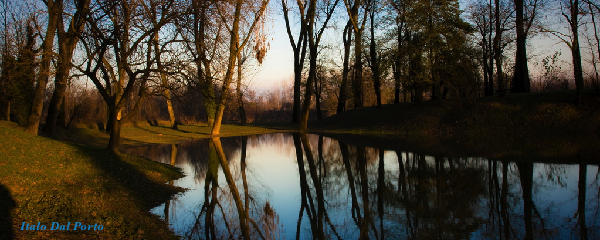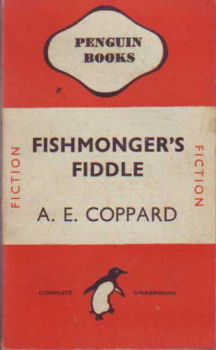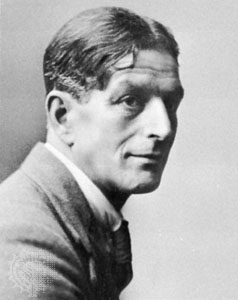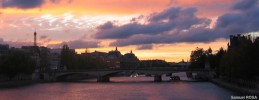
photo by Italo Dal Porto
by Mike Smith
In her introduction to the 1972 Cape edition of Coppard’s Selected Stories, Doris Lessing says that his tales are ‘treasures’ for those ‘who use books for nourishment and not debate’. Thus rebuked, I open my discussion.
I had noticed ‘The Higgler’ already – the title that is. The story is one of a handful from Coppard’s twenty-five collections to get mentioned whenever he’s being discussed and it was the word itself – higgler – that attracted me. I don’t recall ever having heard it spoken, or seen it used in any other context than that of this particular story. When I shifted from thought to keyboard I was rather pleased to find that my spell-checker didn’t recognise it either. It might remind you of ‘hustler’. It reminds me of ‘haggler’.
Coppard was born in 1878, twenty-two years before V.S. Pritchett with whom he is often linked, certainly in my mind. The two writers also seem to share the distinction of being talked about more often than they are published. Yet the references to him, as with Lessing’s, are encouraging. In their classic histories of the short story, H.E. Bates and Frank O’Connor both refer to Coppard as being a formative writer of the English short story. Even Wikipedia notes his influence, though its entry about him is rather brief.
 A self-educated man from humble origins, Coppard went to Oxford – to work as a clerk, not as a student – where he became part of the literary scene. In 1919, against the better judgement of others, and ‘throwing himself entirely on the rewards of literature’, he took himself off to a cottage in the woods nearby and surrounded himself with the landscape that would define his work.
A self-educated man from humble origins, Coppard went to Oxford – to work as a clerk, not as a student – where he became part of the literary scene. In 1919, against the better judgement of others, and ‘throwing himself entirely on the rewards of literature’, he took himself off to a cottage in the woods nearby and surrounded himself with the landscape that would define his work.
Coppard is a writer of the English countryside, and his writing is reminiscent at times of Hardy; at times of Bates. His characters, in their romantic attachments and disconnections, often remind me of Pritchett’s. Yet there is something uniquely ‘Coppard’ about them too. His writing life covered the first half of the twentieth century, making him, in writing terms, a contemporary of Joyce, as well as George Moore, Pritchett, and Bates. ‘The Higgler’, published in Fishmonger’s Fiddle (1925), sits in the years when Pritchett was just beginning and Moore was drawing to a close.
Coppard’s higgler is a man up against it, trying to make a living by buying and selling whatever he can as a poultry dealer. In the story, he takes his horse and cart over Shag Moor, into country where he has not traded before, looking for the ‘break’ that will turn his fortunes around. There he finds the almost too-good-to-be-true Prattle Corner farm: ‘everything here seemed on the small scale, but snug, very snug’ (Coppard, 121). The higgler is not quite engaged to the village girl, Sophy, when at Prattle Corner he meets Mary, the beautiful but shy farmer’s daughter. Soon, he is torn between his attachment to Sophy and the allure of Mary with her undoubted wealth. Though Mary has barely spoken during his frequent visits to do business at her family’s smallholding, her mother eventually suggests that the couple marry.
But the higgler is not a simple character. He is conscious of his feelings for Sophy, and knows they are returned. Despite his own mother’s urging, he knows that to marry for money alone would not be wise, and Mary has given him no indication of her feelings. So he marries Sophy, stops trading at Prattle Corner, and watches his livelihood disintegrate while his mother and wife bicker. Eventually, he returns to the farm, hoping to revive his trading there, and finds that Mary’s mother has just died. As he helps Mary to lay out the body, he discovers that it had been she who had prompted her mother to suggest the marriage.
As with many Coppard stories it is not the knife blade of revelation, sharp as that may be, that forms the end of the story. Coppard is not Ambrose Bierce! Almost always there is a sharp point to his story, but he takes the narrative beyond that point – returning us to a scene, and taking us into a future. In ‘The Higgler’, the eponymous hero reflects upon his marriage choice, and how different his life would have been had he known of Mary’s feelings before and chosen her over Sophy. But that is not all. Coppard has one more element to give us, putting the story into a larger context, and projecting us forward to speculate about what will happen next.
As with most stories, the nourishment, as well as the debate, is as much to do with the form as it is the content. There are some lovely little touches in ‘The Higgler’: ‘A dead thrush on its back, its legs stiff in the air’ (124) spoils the idyllic appearance of Prattle Corner. And when watching children mimicking a church service, the image of ‘the axe fixed in a chopping block’ (132) seems to carry a hidden meaning.

Writers from Coppard’s time and after, still draw our attention to the England that was just about to plunge into the largest (rather than the first) of the ‘industrial’ wars, and to the permanently maimed country that emerged from it. Coppard was born two years after my adoptive grandmother and I can remember her talking about waving the men off to war, a war in which British soldiers were still dressed in red coats! That world of ‘Victorian values’ – Dickens had died only eight years before Coppard’s birth – gave way to the brief interlude of the Edwardians, when rural England starved and the landed gentry squandered their last decade of indulgence. After World War One, when Coppard began his writing career, there followed the steep slide into the General Strike and the Wall Street Crash, along with the economic collapse of the English countryside.
‘The Higgler’ was one of several Coppard stories included in a 1972 TV mini-series. Reviews emphasise the grittiness of the stories, rather than any nostalgia for an imaginary lost idyll. Perhaps it is the modernity of Coppard that surprises: the ordinariness of his characters; the reality of their lives, external and internal; the palpable presence of the English rural landscape. And, though his sentences are sometimes long and complex, there is a stripped down quality to his stories – and, paradoxically, a sense that they fit into larger stories, stories that have led them to this place and which lead away to somewhere new. After a battle, he does not leave us at the edge of an abyss, as would writers such as Bierce. Rather, he takes us down tracks like the one that crosses Shag Moor, tracks that come from where we have come, which lead on to places we must inevitably go.


One thought on “A.E.Coppard’s ‘The Higgler’”
Comments are closed.